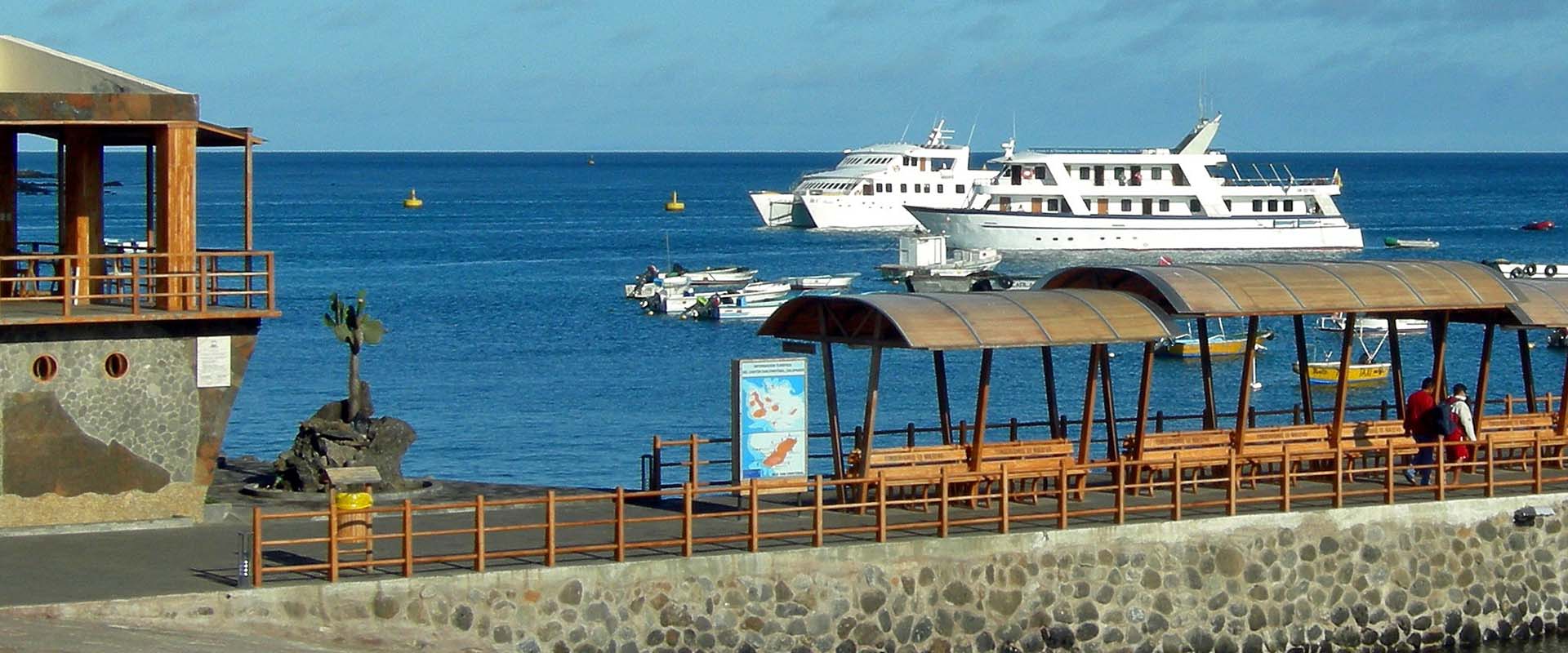Liveaboard Diving in San Cristobal
What to expect on a San Cristobal Island Liveaboard
San Cristobal liveaboards will take divers to the most eastern island of the Galapagos which is also the capital of the Galapagos province. In the early days, a penal colony was built on San Cristobal Island in 1880 for prisoners from mainland Ecuador. This later turned into a military base for Ecuador and is now home to many government offices, an Ecuadorian Navy facility, and an airport with daily flights to the mainland. Now this area is very popular with dive and expedition Galapagos liveaboards bringing divers and nature lovers to this amazing area.
Liveaboards to San Cristobal Islands will point you out the inhabitants of this island which include frigatebirds, Galapagos sea lions, Galapagos tortoises, blue and red footed boobies, tropical birds, marine iguanas and dolphins. Its vegetation includes Calandrinia galapagosa, Lecocarpus darwinii, trees such as Lignum vitae, Matazarna. In the waters nearby are sharks, rays, and lobsters.
San Cristobal Island Underwater
Liveaboard diving at San Cristobal is your only opportunity to wreckdive in the Galapagos at Caragua Wreck which is a German transport ship used in World War I. On your dive trip you can also expect a great number of large pelagics, including vast schools of scalloped hammerhead sharks, manta rays, golden rays and dolphins. Whale sharks are also common, as are turtles and tuna.
On a liveaboard dive cruise in San Cristobal you are likely to encounter some creatures that you may not have seen elsewhere, and may never see again. These include Galapagos sharks, sea lions, fur seals, penguins and marine iguanas. Visibility is often great and typically ranges anywhere from 10-15 meters, and temperatures are anywhere from 18-26 degrees Celsius.
Dive sites of San Cristobal Island
Caragua Wreck Throughout WWI transport ships sailed around the Galapagos islands. 100 years ago, just outside the harbour of Puerto Baquerizo Moreno, the WWI German transport ship Caragua sank. At the wreck you'll find stingrays, nudibranches, corals, schools of fish, rays and sea lions. The wreck is approximately 90 meters long and you can inspect the ship's remains including the propellers and boilers.
Cabo Marshall Some 210 km west northwest of San Cristobal Island, is all about mantas. Also you're likely to see white tip sharks and hammerheads, turtles and sea lions. Due to it's remote location a liveaboard is ideal to visit this area.
Gordon's Rock is considered to be one of the better sites in the central region of the Galapagos Archipelago. Due to strong surges and currents this site is also called 'the washing machine'. Hence, you'll find an abundant marine life here such as hammerhead sharks, often seen in impressive sized schools. There are also eagle rays, Galapagos sharks, manta rays, turtles and an exceptional amount of fish. A nearby sea lion colony ensures that, in the right areas you may spot a few on your dive. There is also the chance to spot the endemic fur seals.
At Five Fingers you can see lots of schools of fish coming out to play with the feeding marine iguanas. Around this spectacle you will also be joined by wahoo, wrasse, and jacks.
Kicker Rock has the shape of a sleeping lion. Erosion has split a 148 meters high rock into two forming a narrow channel where manta rays, turtles and sharks are often spotted. You'll also have a chance to see a variety of wrasses, surgeonfish, angelfish, starfish, and possibly Galapagos sharks and hammerhead sharks.
Top tips for divers
Be careful with wreck penetration. Listen carefully to the liveaboard crew's dive briefing and watch out for sharp edges.
Monitor your air supply and watch your no-deco time more frequently. It is easy to lose track of time when diving a wreck, but easy to multi-level your dive to stay within no-deco limits.
Due to the remoteness of the Galapagos Islands and the associated costs of any medical treatment, we recommend guests to have sufficient dive-travel insurance.
Getting to San Cristobal Island
Avianca flies to San Cristobal 6 days per week from Guayaquil, Tame 3 days per week and Lan 4 days per week. The flights usually originate in Quito and make a short stop in Guayaquil before continuing.
San Cristobal Diving Reviews
- 9.0 Superb
- 8.8 Fabulous
- Jae In S
South Korea
First day check dive point. Plenty if sea lions are there. Awesome
Diving San Cristobal in October on the Calipso Dive
- 8.0 Very good
- Stephen B
United Kingdom
Visibility not good and check dive a wasted dive. Could have been better spots in San Cristobal with a longer dive after check
Diving San Cristobal in February on the Galapagos Master
- 8.8 Fabulous
- Carlos M
Spain
Los lovos son hermosos, la visibilidad era baja pero muy lindo
Diving San Cristobal in June on the Galapagos Sky











